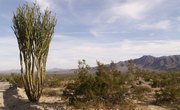
Forest biomes are regions of the world dominated by trees. It is estimated that forests cover approximately one-third of the Earth's land. Forest biomes are divided into three broad categories: temperate, tropical and boreal forests. Environmental factors such as climate, geography and resource availability determine the differences between the types of forest biomes.
Forest Biome Geography
Temperate forests are found across mid-latitudes throughout Europe, China, Japan, the coasts of North America, New Zealand, southern Australia and Chile, extending to Argentina. Hot, wet, tropical forests are found closer to the equator. Snowy boreal forests are the coldest forest type, occurring closer to the North Pole, spanning Canada, Alaska and Russia.
Temperate Forest Environment
Temperate forests feature ever-changing seasons with cool winters and hot summers. The average daily temperature ranges from minus 22 degrees Fahrenheit in winter to 86 degrees Fahrenheit in summer. Temperate forests have a moderate average annual rainfall of 30 to 59 inches.
Trees in the Temperate Forest
To cope with seasonal changes, many plants in the temperate forest have specific adaptations. For example, trees such as oaks (Quercus spp.) and maples (Acer spp.) have leaves that turn orange, yellow or red in autumn and fall to reduce the risk of snow or frost damage in winter. In spring, they sprout new leaves that will conduct photosynthesis and allow the trees to grow.
Other trees, like conifers (Pinophyta), which also dominate boreal forests, have different strategies to adapt to freezing conditions in winter. These trees, including pine (Pinus spp.), spruce (Picea spp.) and fir (Abies spp.), have flexible branches and thin needle-type leaves, allowing snow to slip through. Their needles are evergreen, enabling photosynthesis year-round, and waxy, which helps prevent excess evaporation in summer.
Temperate Forest Plant-Fungi Network
Though water is limited and temperatures cool compared to tropical forests, trees can still grow to vast sizes. To support their growth, plants connect their tree roots to a vast fungal mycorrhizal network that spreads throughout the forest soils. Via their roots, plants share excess sugars produced through photosynthesis with the fungi in exchange for the movement of nitrogen and other vital nutrients. Some trees have even been found to use this network to feed their offspring growing nearby, supporting their growth during juvenile years.
Plants That Grow in the Temperate Forest
Temperate forest understories are full of temperate forest plants such as shrubs and forbs. Shrubs are small to medium-sized plants with woody stems, such as blueberries (Vaccinium spp.) and camellias (Camellia spp.). Forbs are small, non-woody flowering plants like lilies (Lilium spp.) and orchids (Orchidaceae family). Forest edges and gaps tend to be filled with herbaceous temperate plants such as grasses (Poaceae family) and sedges (Cyperaceae family).
Temperate Forest Parasitic Plants
Most plants obtain their nutrients through photosynthesis. Parasitic plants steal their nutrients from other plants. One of the most famous temperate forest parasites is the mistletoe (Santalales order). Instead of burrowing their roots into the ground, mistletoe burrows them into the branches of host trees.
Another parasitic plant in temperate forests is the Indian pipe or ghost plant (Monotropa uniflora). Unlike mistletoe, which derives some of its nutrients from photosynthesis, ghost plants are pure white and take all their nutrients from the underground mycorrhizal network. Strange, parasitic plants are not unusual in temperate forests; bright red snow plants (Sarcodes sanguinea) have a similar parasitic strategy to ghost plants.
Temperate Forest Animals
A wide variety of animals call temperate forests home. Similar to temperate plants, temperate forest animals have adapted to the seasonal changes. Like squirrels and chipmunks (Sciuridae family), some animals store food in caches during autumn to sustain them through the sparse winter months. Migratory birds and monarch butterflies (Danaus plexippus) fly to warmer areas during winter. Other animals, like black bears (Ursus americanus), hibernate to conserve energy, while others stay active but use their warm coats or feathers to stay warm.
References
- NatureWorks: Temperate Deciduous Forests
- Arizona State University: Plants of the Temperate Forest
- NASA Earth Observatory: Temperate Deciduous Forest
- National Geographic Kids: Temperate Forest Habitat
- National Geographic: Forest Biome
- University of California Museum of Paleontology: The Forest Biome
- BBC Bitesize GCSE: Coniferous Woodland
- Smithsonian: Do Trees Talk to Each Other?
- U.S. Forest Service: Snow Plant (Sarcodes Sanguinea Torr.)
- Arizona State University: Animals of the Temperate Forest
About the Author
Adrianne Elizabeth is a freelance writer and editor. She has a Bachelor of Science in Ecology and Biodiversity, and Marine Biology from Victoria University of Wellington in New Zealand. Driven by her love and fascination with all animals behavior and care, she also gained a Certificate in Captive Wild Animal Management from UNITEC in Auckland, New Zealand, with work experience at Wellington Zoo. Before becoming a freelance writer, Adrianne worked for many years as a Marine Aquaculture Research Technician with Plant & Food Research in New Zealand. Now Adrianne's freelance writing career focuses on helping people achieve happier, healthier lives by using scientifically proven health and wellness techniques. Adrianne is also focused on helping people better understand ecosystem functions, their importance, and how we can each help to look after them.
Photo Credits
primrose image by Studio Pookini from Fotolia.com
